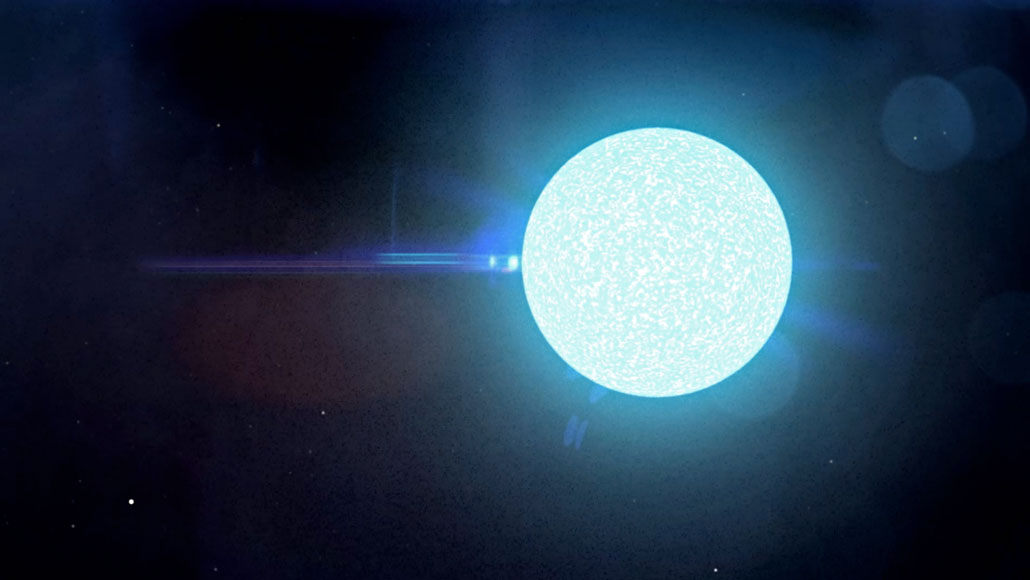It is quite possible that there may be mountains on neutron stars that are formed due to the movement of their crust. If so, then they should generate gravitational waves. By observing them, we will be able to understand the internal structure of these supernova remnants.

Where are the mountains on neutron stars from?
A group of scientists has published a study according to which mountains on neutron stars can generate gravitational waves. And those, in turn, can tell us a lot about these celestial bodies. This news may seem strange, since can there really be mountains on the stars? However, it is worth dealing with it.
Neutron stars are really extremely dense supernova remnants. With a mass twice that of the sun, they can have a diameter of only 12 km. At the same time, gravity not only breaks molecules into individual atoms, but also pushes electrons into protons inside them. Under such conditions, it seems that neutron stars should be smooth balls.
However, there are some irregularities that scientists call mountains on them. This is clearly indicated by radio signals from pulsars. Usually they are extremely accurate, but from time to time they get lost, and this happens due to the movement of the crust of neutron stars, as a result of which mountains are formed.
Crust of neutron stars
Scientists agree that these “mountains” actually have an extremely insignificant height. However, it is not known whether it is measured in centimeters or meters. It all depends on what the neutron star’s crust is, and scientists know practically nothing about it.
Small bodies in the Solar System exhibit tectonics in different ways. For example, wide ledges form on Mercury with its light crust and dense core. On the icy Enceladus, there are mountains and faults, which are called tiger stripes. And on Europa, which is very similar to it, there is only a grid of cracks covering a smooth ball.
Gravitational waves
We can only guess what the irregularities on the surface of neutron stars will look like. However, there is one way to deal with this. Scientists say that if there are mountains on pulsars, then they should generate gravitational waves. However, they are too weak for us to catch them with modern tools.
However, it is possible to succeed in the future. And then gravitational waves will be able to tell us a lot about the shape and size of mountains on neutron stars. And this, in turn, will help to understand what is inside them.
The authors of the publication have established another possible interesting pattern. If there really is something on neutron stars that can be called a mountain, then their size and characteristics should determine the upper limit of their rotation speed.
According to phys.org.
Follow us on Twitter to get the most interesting space news in time
https://twitter.com/ust_magazine

